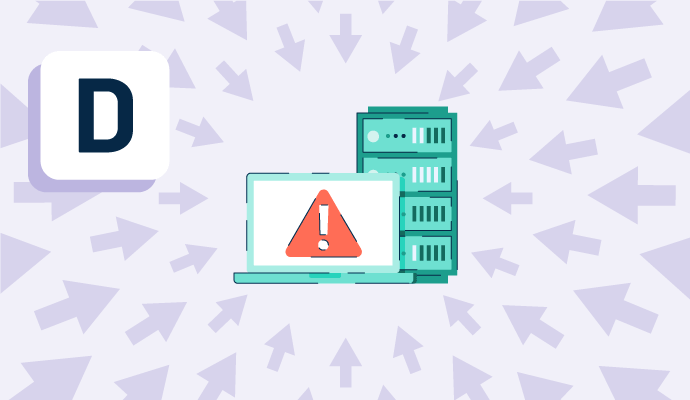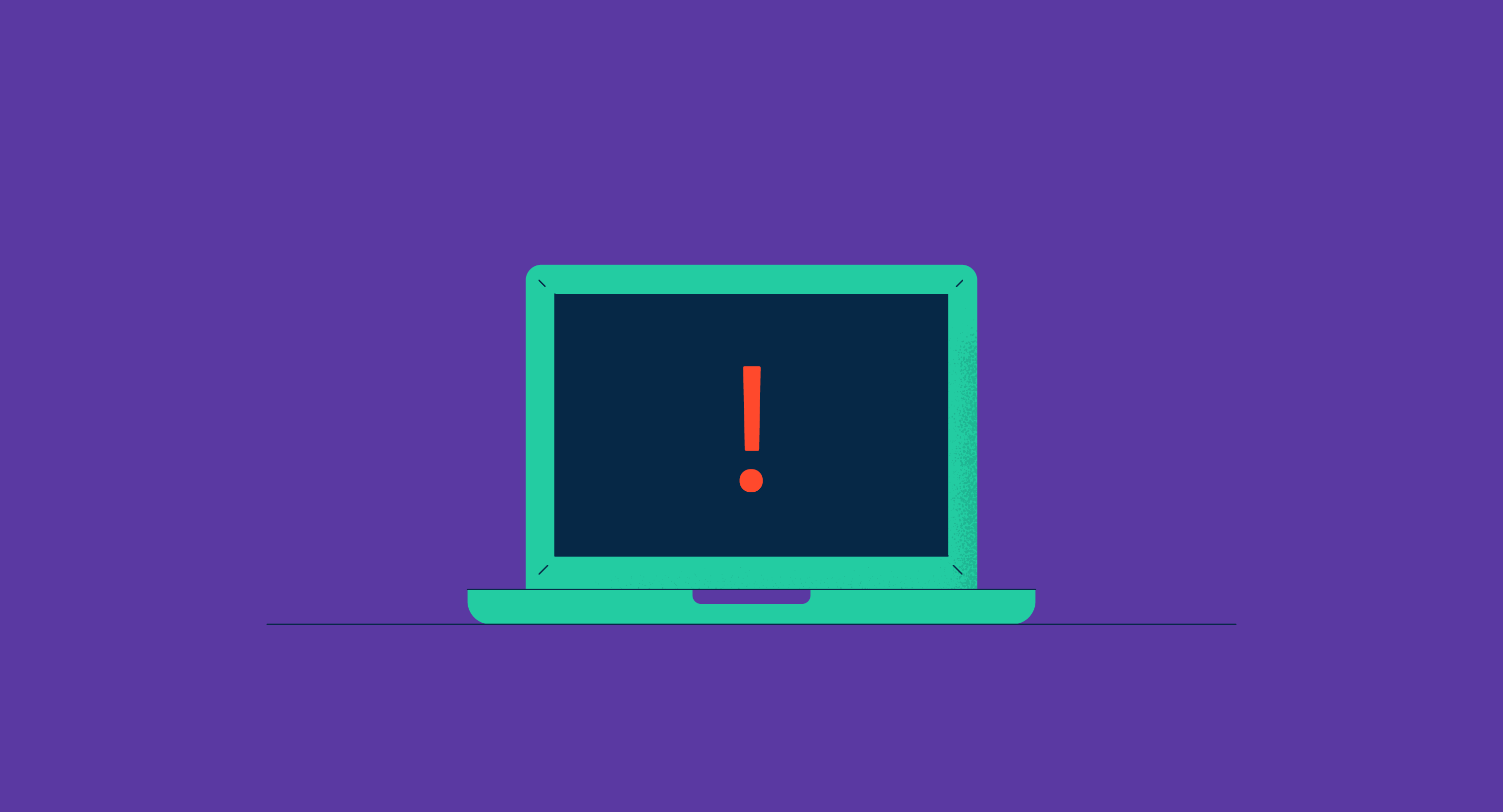What is DDoS?
A distributed denial-of-service (DDoS) is a cyber attack wherein multiple compromised computers or devices flood a targeted system or network with a massive amount of fake traffic. Its purpose is to overwhelm the target's resources – like bandwidth, processing power, or memory – making it difficult or impossible for legitimate users to access the network.
During a DDoS attack, the perpetrator infects many computers or devices with malware, which creates a network of compromised machines known as a botnet. With these compromised machines, also called "bots" or "zombies," the hacker can control botnets remotely, typically without their owners' knowledge.
Once the botnet is assembled, the cyber criminal initiates the attack by instructing the compromised machines to send a barrage of requests or data packets to the target.
The intensity and scale of a DDoS attack can vary, ranging from relatively small initiatives that disrupt specific websites to large-scale attacks that go after entire networks. Hackers may use various techniques to amplify the attack's impact, such as spoofing the source IP addresses to make it difficult to trace the attack's origin or employing reflection and amplification methods to multiply the volume of corrupting traffic.
To protect various types of data, businesses use DDoS protection software to help secure websites and applications. These tools can proactively maintain steady site functionality and prevent sudden site delivery failures caused by the rapid influx of traffic.
Types of DDoS attacks
DDoS attacks come in a variety of forms, each concentrating on different aspects of a target system. Some common ones are mentioned below.
- Volumetric attacks overwhelm the target network with a high traffic volume in order to drain its bandwidth capacity.
- Transmission Control Protocol/Internet Protocol (TCP/IP) attacks exploit weak spots in the TCP/IP protocol stack, such as SYN floods, ACK floods, or TCP connection exhaustion attacks.
- Application layer attacks seek out specific applications or services to take advantage of vulnerabilities in web servers, domain name systems (DNS) servers, or databases.
- Fragmentation attacks are executed by cyber criminals who send fragmented packets to strain a target's reassembly capabilities.
- Slowloris attacks aim to exhaust the target's resources by initiating multiple slow and incomplete connections, keeping them open as long as possible.
- Reflective/amplification attacks are carried out to manipulate misconfigured servers to reflect and amplify attack traffic, making it difficult to trace the origin.
Why DDoS attacks occur
DDoS attacks are malicious acts, but attackers utilize them for several reasons, including:
- Disruption: DDoS attacks can halt online services, causing inconvenience, creating financial losses, and damaging an organization's reputation.
- Diversion: Attackers may launch DDoS attacks as a smokescreen to divert attention from other malicious activities, such as data breaches.
- Extortion: Some people use DDoS attacks to extort money from targeted individuals or organizations with threats of continued disruption unless a ransom is paid.
- Ideological motivations: Hacktivist groups may launch these cyber attacks to express dissent, protest, or advocate for a particular cause.
Basic elements of a DDoS attack
Understanding the fundamental components of a DDoS attack helps organizations strengthen their defenses.
- Botnets: Attackers leverage compromised computers or devices to create a network of bots that can be remotely controlled to carry out the attack.
- Command and Control (C&C): The attacker communicates with the botnet using a centralized C&C infrastructure to coordinate and direct the attack.
- Exploited vulnerabilities: Attackers poke at weaknesses in network protocols, server configurations, or application vulnerabilities to amplify the attack.
- Attack traffic: This encompasses the flood of traffic generated by the botnet.
- Collateral damage: Unintended targets, such as intermediary systems or shared infrastructure, can suffer from the attack.
DDoS challenges
DDoS attacks present several significant challenges for organizations and individuals.
- Scalability: DDoS attacks scale generate massive traffic that overwhelms their target's resources. Dealing with such high traffic volumes requires a robust and scalable infrastructure to handle the increased load.
- Attack sophistication: Hackers constantly evolve their tactics, techniques, and tools to bypass security measures and abuse vulnerabilities. This makes it challenging to correctly anticipate and mitigate new, sophisticated DDoS attack methods.
- Traffic differentiation: Distinguishing legitimate user traffic from malicious traffic during an attack is a significant undertaking. These cyber crimes often use spoofed or distributed sources that make it difficult to differentiate between real users and attackers. This can result in blocking or throttling legitimate traffic, negatively affecting the user experience.
- Short attack duration: Some DDoS attacks only last a few hours or even minutes. Detecting and responding to attacks within a brief timeframe is demanding, especially if the attack occurs outside regular monitoring hours or during periods of low staff availability.
- Reflection and amplification: Attackers often turn to reflection and amplification techniques to magnify the volume of attack traffic. By spoofing the source IP addresses and leveraging vulnerable servers or protocols, attackers can build a significantly larger traffic volume than the resources they control. Mitigating DDoS assaults requires identifying and securing vulnerable systems on the internet.
- Reputational harm: DDoS attacks can cause significant damage to an organization's reputation, particularly if prolonged service disruptions or data breaches occur as a result. Rebuilding trust and restoring the confidence of customers and stakeholders can be a daunting task.
Best practices for preventing DDoS attacks
DDoS attacks have severe consequences for the targeted organization or individual. They can lead to service disruptions and financial losses, and even compromise the security and integrity of systems and data.
Organizations can rely on several strategies to soften the impact of DDoS attacks. Key best practices include:
- Network monitoring: Implement robust network monitoring solutions to detect unusual traffic patterns and identify potential DDoS attacks in real time.
- Traffic filtering: Utilize firewalls, intrusion prevention systems (IPS), and load balancers to filter out malicious traffic and allow only legitimate requests to reach the target network.
- Redundancy and scalability: Build a distributed and scalable infrastructure to handle increased traffic during an attack to guarantee high availability and minimize service disruptions.
- Content delivery networks (CDNs): Use CDNs to distribute and cache content across multiple servers. This reduces the impact of a DDoS attack by more evenly distributing the load.
- Rate limiting: Set up rate-limiting mechanisms to restrict the number of requests from a single source within a specified timeframe,
- Incident response planning: Develop a comprehensive incident response plan that outlines steps to take during a DDoS attack, including communication strategies, coordination with service providers, and post-attack analysis.
Go one step further in cyber protection by learning about spoofing and how to prevent it.

Mara Calvello
Mara Calvello is a Content and Communications Manager at G2. She received her Bachelor of Arts degree from Elmhurst College (now Elmhurst University). Mara writes customer marketing content, while also focusing on social media and communications for G2. She previously wrote content to support our G2 Tea newsletter, as well as categories on artificial intelligence, natural language understanding (NLU), AI code generation, synthetic data, and more. In her spare time, she's out exploring with her rescue dog Zeke or enjoying a good book.

















